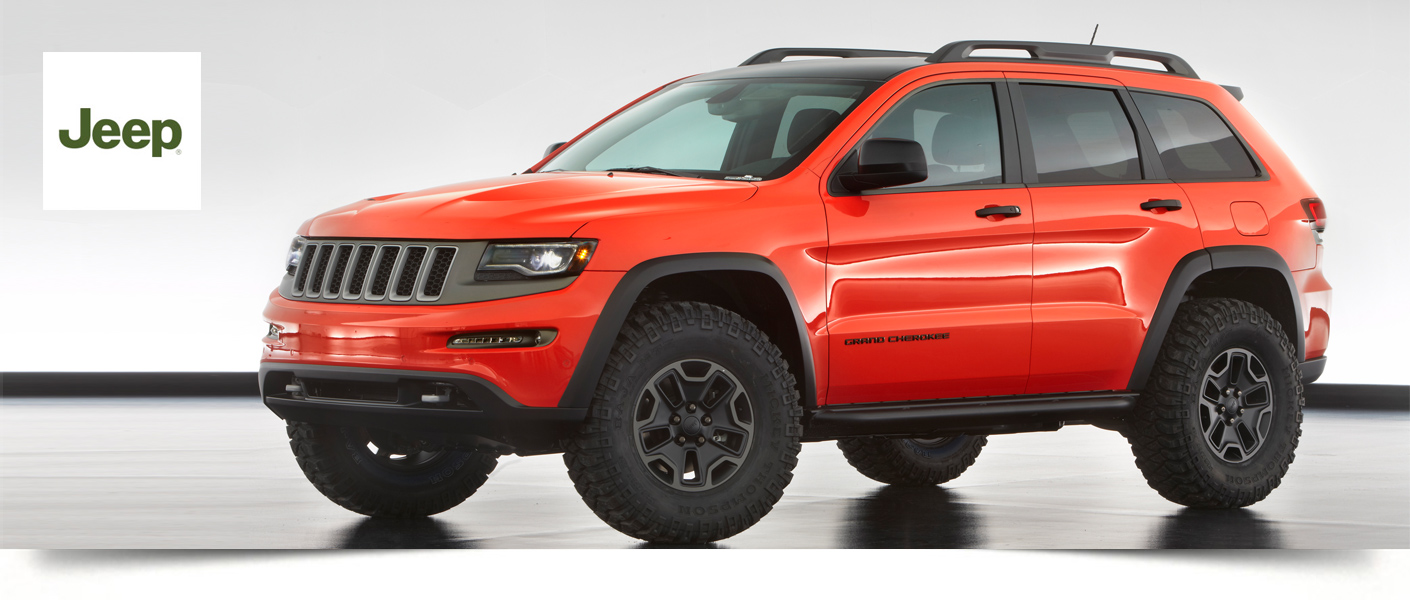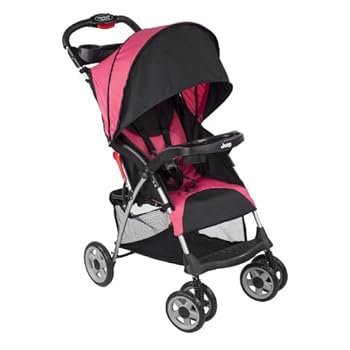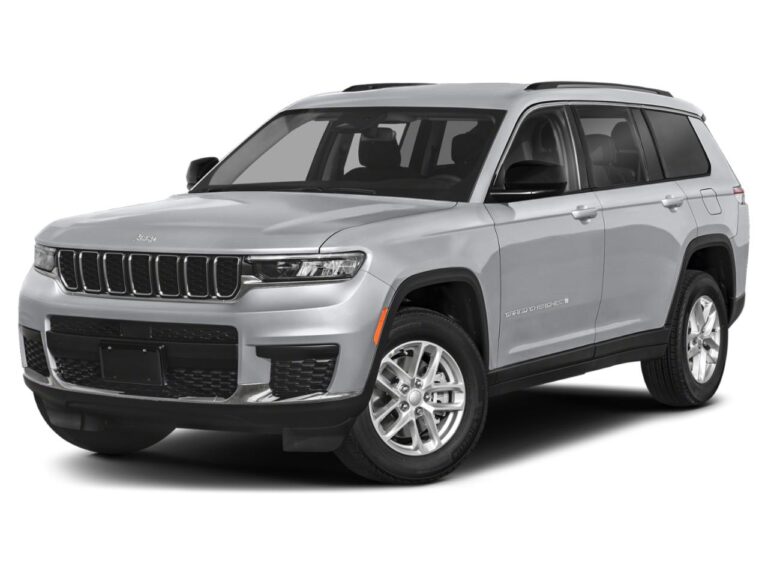Jeep Cherokee Parts Catalog: Your Definitive Guide to Maintenance and Repair
Jeep Cherokee Parts Catalog: Your Definitive Guide to Maintenance and Repair jeeps.truckstrend.com
The Jeep Cherokee, a name synonymous with adventure, capability, and rugged durability, has graced roads and trails for decades. From the iconic XJ generation to the modern KL, these vehicles have carved out a loyal following. But owning a Jeep Cherokee, especially one that has seen years of service, inevitably leads to the need for maintenance and repairs. This is where the Jeep Cherokee Parts Catalog becomes an indispensable tool, serving as the ultimate Rosetta Stone for identifying, understanding, and sourcing the correct components.
More than just a list of parts, a parts catalog is a comprehensive technical document – a blueprint, really – that meticulously details every single component making up your vehicle. For Jeep Cherokee owners, mechanics, and enthusiasts alike, understanding and effectively utilizing this catalog is not merely helpful; it’s fundamental to ensuring the longevity, performance, and safety of their beloved vehicle. It’s the difference between a frustrating guessing game and a precise, efficient repair process.
Jeep Cherokee Parts Catalog: Your Definitive Guide to Maintenance and Repair
What Exactly is a Jeep Cherokee Parts Catalog?
At its core, a Jeep Cherokee Parts Catalog is an organized collection of information about every original equipment manufacturer (OEM) component installed on a specific model year or range of model years of the Jeep Cherokee. These catalogs are typically produced by the vehicle manufacturer (in this case, Jeep/Chrysler/FCA/Stellantis) and are designed to help dealerships, service centers, and now, increasingly, individual owners, accurately identify and order replacement parts.
Think of it as an exhaustive encyclopedia for your Cherokee, complete with:
- Exploded Diagrams: Detailed, three-dimensional illustrations that show how components fit together, often "exploded" to show individual parts and their relationship within an assembly.
- Part Numbers: Unique numerical or alphanumeric identifiers assigned to each specific component, crucial for ordering the correct part.
- Part Descriptions: Clear, concise descriptions of what each part is and its function.
- Fitment Information: Crucial details indicating which specific model years, trims, engine types, or even production dates a part is applicable to.
- Quantity Required: The number of a particular part needed for a specific assembly or repair.

Whether you’re looking for a simple oil filter, a complex transmission component, or a specific trim piece, the parts catalog provides the authoritative answer, eliminating guesswork and ensuring compatibility.
The Indispensable Value of the Parts Catalog
For anyone involved with a Jeep Cherokee, the parts catalog offers a multitude of benefits that transcend simple convenience:
- Unparalleled Accuracy: The primary benefit is the absolute certainty it provides. Using the catalog, especially in conjunction with your vehicle’s VIN (Vehicle Identification Number), guarantees you’re identifying the exact part designed for your specific vehicle configuration. This avoids costly errors and frustrating returns.
- Significant Cost Savings: Ordering the wrong part is a waste of money, shipping fees, and valuable time. The catalog prevents this by ensuring a first-time correct purchase. It also empowers DIYers to confidently source parts themselves, often at a better price than through a mechanic, and avoids unnecessary labor costs.
- Empowerment for DIY Enthusiasts: For those who prefer to tackle repairs themselves, the catalog is an invaluable teacher. The exploded diagrams help demystify complex assemblies, making disassembly and reassembly more manageable.
- Informed Communication with Professionals: Even if you rely on a mechanic, understanding the parts catalog allows for more informed discussions. You can verify part numbers, understand proposed repairs, and ensure you’re getting the right components and fair pricing.
- Historical Preservation: For older Jeep Cherokee models, particularly the beloved XJ, original parts can become scarce. The catalog provides the definitive reference for what should be there, aiding in the search for new old stock (NOS) parts, suitable aftermarket alternatives, or even facilitating custom fabrication when necessary.

Navigating the Types of Cherokee Parts Catalogs
Jeep Cherokee parts catalogs come in various forms, each with its own advantages:
- OEM (Original Equipment Manufacturer) Catalogs: These are the official publications from Jeep/Chrysler. They offer the highest level of accuracy for factory-installed parts.
- Availability: Often accessible through dealership service departments, online subscription services (like Mopar’s tech authority or similar platforms), or sometimes in physical book format for older models.
- Pros: Definitive, detailed fitment notes, excellent diagrams.
- Cons: Can be expensive to access (for online subscriptions), may not list aftermarket alternatives.
- Aftermarket Parts Catalogs: Produced by third-party manufacturers (e.g., Fel-Pro, Moog, Bosch, ACDelco) or large parts retailers (e.g., RockAuto, AutoZone, O’Reilly). These catalogs often cross-reference OEM part numbers with their own proprietary numbers.
- Availability: Widely available online through retailer websites, or in print at auto parts stores.
- Pros: Broader range of options (economy, premium, performance), often more competitive pricing, easy comparison.
- Cons: May not be as detailed as OEM diagrams, accuracy can vary, relies on correct cross-referencing.
- Digital vs. Physical Catalogs:
- Digital: Increasingly common, offering powerful search functions (by VIN, part name, number), immediate updates, and accessibility from anywhere with an internet connection. Many OEM catalogs are now exclusively digital.
- Physical: Traditional bound books or microfiche (for very old models). While less convenient for searching, they offer a tangible reference that doesn’t rely on power or internet, and some enthusiasts simply prefer the tactile experience.
For the modern Cherokee owner, a combination of digital OEM resources and online aftermarket retailers often provides the most comprehensive and practical solution.
A Step-by-Step Guide to Using Your Parts Catalog Effectively
Leveraging the full potential of a Jeep Cherokee parts catalog requires a systematic approach:
- Identify Your Vehicle Accurately: This is the most crucial step. Always start with your Vehicle Identification Number (VIN). The VIN precisely defines your Cherokee’s year, make, model, trim level, engine type, and even the plant it was built in, which can affect part variations. Also note the exact model year, trim (e.g., Laredo, Limited, Trailhawk), and engine size (e.g., 4.0L I6, 3.2L V6).
- Locate the Relevant System or Component Group: Catalogs are typically organized by major vehicle systems (e.g., Engine, Transmission, Suspension, Brakes, Body, Electrical). Navigate to the section relevant to the part you need.
- Utilize Exploded Diagrams: These visual aids are paramount. Find the diagram that shows the assembly containing your desired part. Carefully study how the components fit together.
- Identify the Part Number: Once you’ve visually located the part on the diagram, match it to the corresponding part number listed in the accompanying table or key. Pay close attention to any callouts or arrows.
- Check Fitment Notes and Supersessions: Many parts have specific applicability notes (e.g., "for models built after Jan 2005," "for vehicles with heavy-duty brakes"). Read these carefully. Also, be aware of "superseded" part numbers, where an older part number has been replaced by a newer, compatible one. Catalogs will usually indicate this.
- Cross-Reference (if using aftermarket options): If you plan to buy an aftermarket part, use the OEM part number you found to search reliable aftermarket suppliers. Reputable sites will often show multiple brands that claim compatibility with the OEM number.
Key Information You’ll Find Within
A comprehensive Jeep Cherokee Parts Catalog will typically provide:
- OEM Part Numbers: The official numbers assigned by Jeep.
- Detailed Descriptions: Beyond just the name, often including material, dimensions, or specific features.
- Illustrations and Exploded Diagrams: Visual representation of parts and assemblies.
- Applicability: Specific model years, engine codes, transmission types, and trim levels the part fits.
- Quantity Per Vehicle: How many of a particular part are used in a specific assembly (e.g., 4 spark plugs, 2 control arms).
- Group and Figure Numbers: Internal organizational numbers for the catalog itself.
Overcoming Challenges in Parts Sourcing
While invaluable, using a parts catalog isn’t without its potential challenges, especially for older Cherokees:
- Obsolete or Discontinued Parts: For vintage XJs or less common variants, some OEM parts may no longer be manufactured.
- Solution: Leverage forums and enthusiast communities for leads on New Old Stock (NOS), reputable used parts suppliers, or companies specializing in remanufactured components. Aftermarket alternatives become crucial here.
- Confusing Diagrams or Incomplete Information: Occasionally, diagrams can be difficult to interpret, or information might seem ambiguous.
- Solution: Consult online Jeep Cherokee forums or dedicated Facebook groups. Experienced owners often share insights and clarifications. Don’t hesitate to call a dealership parts counter with your VIN; their trained staff often have access to more detailed internal resources.
- Counterfeit or Low-Quality Parts: The market can be flooded with cheap, unreliable copies.
- Solution: Always buy from reputable sources, whether it’s an authorized dealer, well-known aftermarket brands, or trusted online retailers with good return policies. If a deal seems too good to be true, it probably is.
Practical Advice and Actionable Insights
To maximize your success with the Jeep Cherokee Parts Catalog:
- Start with Your VIN: Always, always begin your search with your vehicle’s full VIN. It’s the ultimate arbiter of correctness.
- Invest in a Digital OEM Subscription (if available): For newer Cherokees, a short-term subscription to an official Mopar or similar OEM service can pay for itself many times over.
- Bookmark Reputable Online Retailers: Sites like RockAuto, Quadratec (for off-road specific parts), Summit Racing, and others are excellent for finding both OEM and aftermarket options once you have your part numbers.
- Join Cherokee Enthusiast Communities: Online forums (e.g., CherokeeForum.com, NAXJA.org for XJs) and social media groups are goldmines of shared knowledge, where members often help each other identify parts and source difficult-to-find items.
- Don’t Be Afraid to Call the Dealership: Even if you plan to buy elsewhere, a quick call to a dealership parts department with your VIN can often yield the correct OEM part number, which you can then use for cross-referencing.
- Maintain a "Parts Log": Keep a record of parts you’ve replaced, including their part numbers, where you bought them, and the date of installation. This helps with future maintenance and troubleshooting.
Sample Pricing for Common Jeep Cherokee Parts (Found Using a Parts Catalog)
It’s important to understand that a parts catalog itself doesn’t have a single price. Rather, it is the tool you use to find the prices of individual components. Prices for parts fluctuate based on brand (OEM vs. aftermarket), supplier, market demand, and your specific Cherokee model/year. The table below offers estimated price ranges for common parts, assuming you’ve identified them using a parts catalog:
| Part Category | Specific Part Example | Estimated Price Range (USD) | Notes |
|---|---|---|---|
| Maintenance | Oil Filter | $5 – $20 | Varies by brand (OEM, premium aftermarket, economy) |
| Air Filter | $15 – $40 | Engine air filter; cabin air filter may be separate. | |
| Spark Plugs (per set) | $30 – $100 | Varies by material (copper, platinum, iridium) and engine type. | |
| Wiper Blades (pair) | $20 – $50 | Standard vs. beam vs. hybrid. | |
| Brake System | Front Brake Pads (set) | $30 – $100 | Varies by material (ceramic, semi-metallic) and brand. |
| Front Brake Rotors (each) | $40 – $120 | Varies by quality (standard, drilled/slotted) and vehicle trim. | |
| Suspension | Front Shock Absorber (ea) | $50 – $200 | Standard vs. heavy-duty vs. performance. Some models use struts. |
| Rear Leaf Spring (XJ, each) | $100 – $300 | Varies by lift/capacity; XJ specific. | |
| Control Arm (each) | $60 – $200 | Upper/lower, front/rear, includes bushings. | |
| Engine Components | Water Pump | $50 – $150 | OEM vs. aftermarket; may include gasket. |
| Radiator | $100 – $400 | Varies by material (aluminum, plastic tank), core size. | |
| Alternator | $120 – $350 | Remanufactured vs. new; OEM vs. aftermarket. | |
| Electrical | Headlight Assembly (each) | $80 – $400 | Varies greatly by generation (XJ sealed beam vs. KL LED) and trim level. |
| Tail Light Assembly (each) | $70 – $250 | Varies by generation and features. | |
| Body/Interior | Door Handle (exterior) | $20 – $80 | Plastic vs. metal, painted vs. unpainted. |
| Window Regulator (each) | $60 – $180 | Manual vs. power; often includes motor. |
Disclaimer: These prices are estimates only and can vary significantly based on your specific Jeep Cherokee model year, trim, engine, the brand of the part (OEM vs. aftermarket), and the retailer you purchase from. Always verify current pricing with your chosen supplier.
Frequently Asked Questions (FAQ)
Q1: Where can I find a Jeep Cherokee parts catalog for my specific vehicle?
A1: For newer models (KL), online subscription services (like Mopar’s TechAuthority or similar professional portals) are often the best source for OEM catalogs. For older models (XJ, KJ, KK), physical service manuals often contain parts breakdowns, and online aftermarket retailers (like RockAuto, Quadratec) have extensive databases that function as catalogs. Forums and enthusiast groups can also direct you to specific online resources.
Q2: Are aftermarket parts catalogs as reliable as OEM ones?
A2: Aftermarket catalogs can be very reliable for popular parts, especially from well-known brands. However, OEM catalogs are the definitive source for factory specifications and original part numbers. Always cross-reference and verify fitment, especially if the aftermarket catalog doesn’t provide a direct OEM equivalent.
Q3: Can I use a parts catalog from a different year Cherokee if my exact year isn’t available?
A3: Only with extreme caution. While many parts are interchangeable across a generation (e.g., XJ Cherokees from 1984-2001 share many common components), there are often subtle but critical differences year-to-year or trim-to-trim. Always verify with your VIN and specific part notes. It’s usually better to find a catalog specific to your exact model year.
Q4: What’s the difference between an OEM part number and an aftermarket part number?
A4: An OEM part number is the unique identifier assigned by the original manufacturer (Jeep/Mopar). An aftermarket part number is assigned by a third-party manufacturer (e.g., Bosch, Moog) for their equivalent component. Reputable aftermarket suppliers will often list the OEM part number that their product replaces for easy cross-referencing.
Q5: How often are parts catalogs updated?
A5: OEM digital catalogs are updated regularly to reflect new parts, superseded numbers, and production changes. Physical catalogs are static once printed. Aftermarket online catalogs are typically updated frequently by the retailers and manufacturers as new products become available or old ones are discontinued.
Conclusion
The Jeep Cherokee Parts Catalog is far more than just a dry list of components; it is a vital navigational tool for every owner and technician. It empowers you with the knowledge to accurately identify parts, make informed purchasing decisions, and confidently undertake maintenance or repair projects. By embracing the power of these catalogs, you not only save time and money but also deepen your understanding of your vehicle, ensuring your beloved Jeep Cherokee continues to deliver its legendary performance and adventure for years to come. In the world of Jeep ownership, an understanding of the parts catalog isn’t just an advantage; it’s a necessity for true stewardship.



